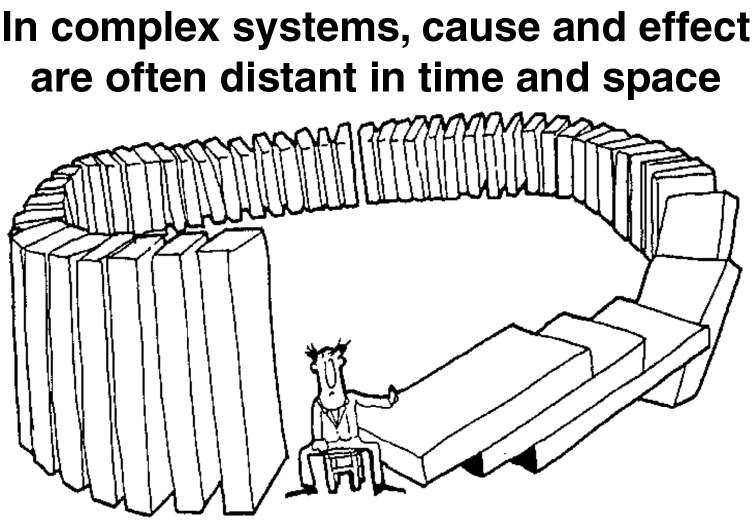“How?”-questions versus “Why?”-questions.
Physics tries to answer ‘how?’-questions and not often you can answer the ‘why?’-questions. For example, Newton found the mathematical way ‘how’ gravity works. The force between two unit masses is inversely proportional to the square of the distance. But he realized it does not even remotely begin to answer the ‘why?’-question. Why in gods name do masses over time reduce the distance between each other? This sounds like magic! Shouldn’t this require an explanation? He famously said: “I feign no hypotheses”. He had no clue why gravity happens.
Now, it is very important to understand that we still have no clue why gravity happens! Einstein answered the ‘How?’-question even more accurate than Newton, but it is a misconception to think that he answered the ‘Why?’-question.
Newton answered the ‘how?’-question with his inverse square law and Einstein answered the ‘how?’-question with saying that matter curves spacetime and spacetime tells matter how to move.
Quite often ‘why’-questions get answered with ‘how’-answers

What do the words actual mean
Why: What is the reason? What is the cause?
How: In what manner? In what way?
How is the question about the route, why is a question about the starting point. What is the end-point (the effect). How is answering what the order of preceding causes are to an effect. Why answers the starting cause of the order what precedes an effect.

Applying this to the above picture: What happened? The last domino fell. How did that happen? All the preceding domino’s fell. Why did it happen? The guy pushed it.
We actually did not answer the ‘why’-question satisfactorily, because we can ask like a little kid: ‘Why did the guy push it?’ and so on.
A good example is applying these questions to life:
How did life arise?
Evolution
Why did life arise?
Coincidence. Self-replicating proteins can exist (prions) and these were possible the first that arose out of a sea of elements.
A really terrible example of wrongly answering the question ‘Why is the sky blue?’ is just saying: ‘Rayleigh scattering’.
Why is the sky blue? Often gets an ‘how’-answer. ‘Raeleigh scattering’. It doesn’t begin to answer the queston Why?
When is a question nonsensical?
How To what degree.
How often do you practice?
In what manner. How do you solve this puzzle? How else can we get this finished?
why For what cause, reason, or purpose. Introducing a complete question. Why is the sky blue? Why did you do that? I don’t know why he did that Tell me why the moon changes phase.
You first have to completely answer the how question to start answering the why question. Or is it?



















